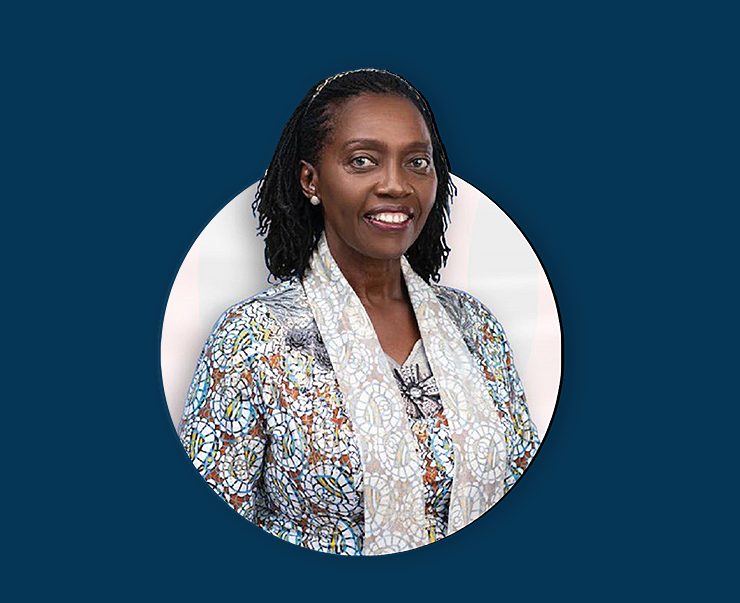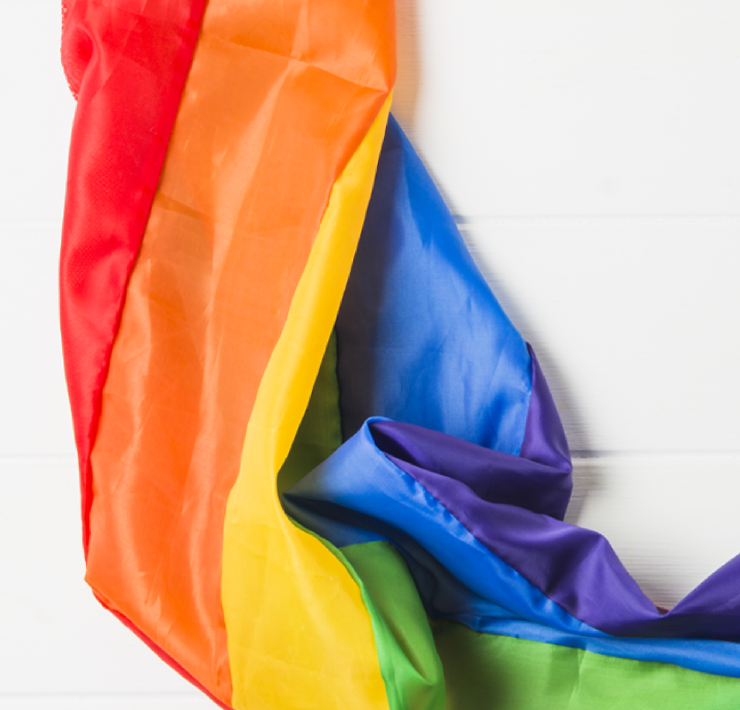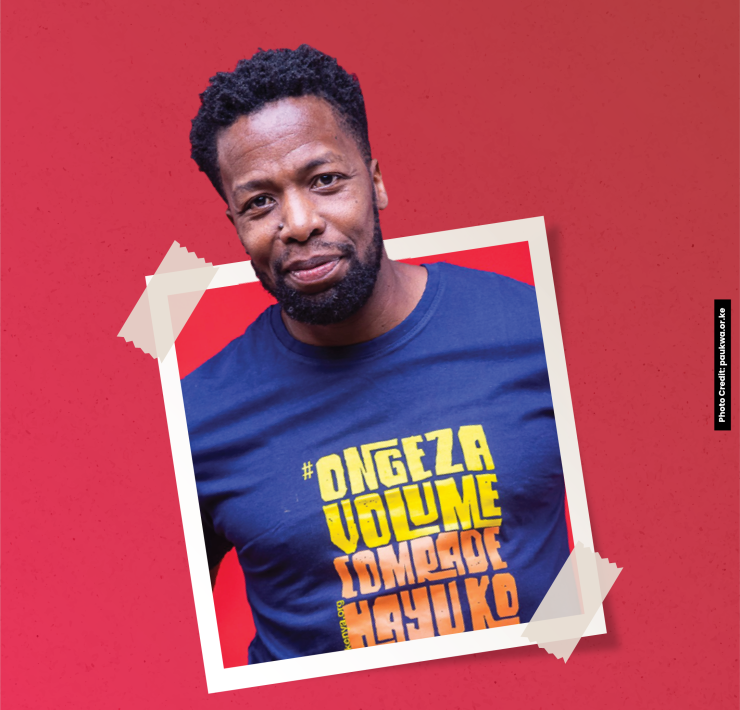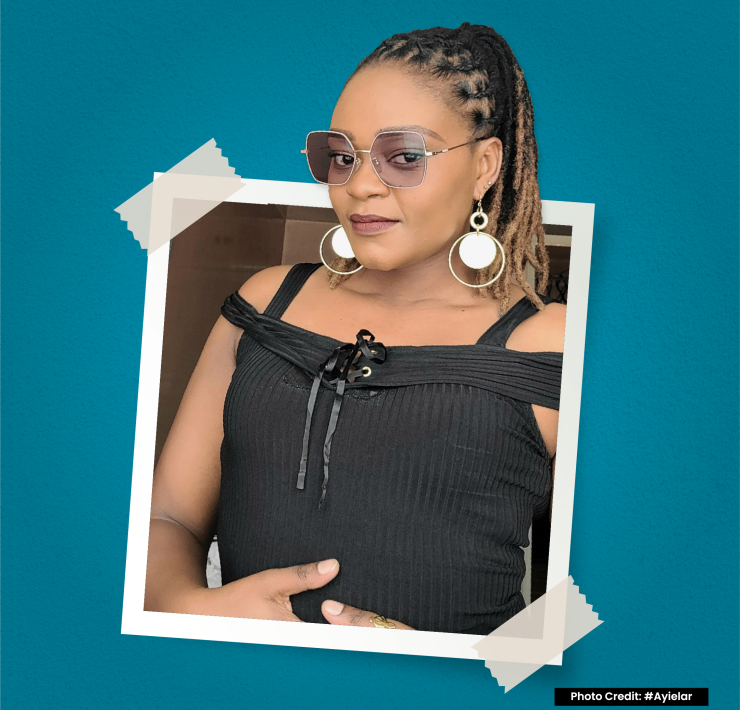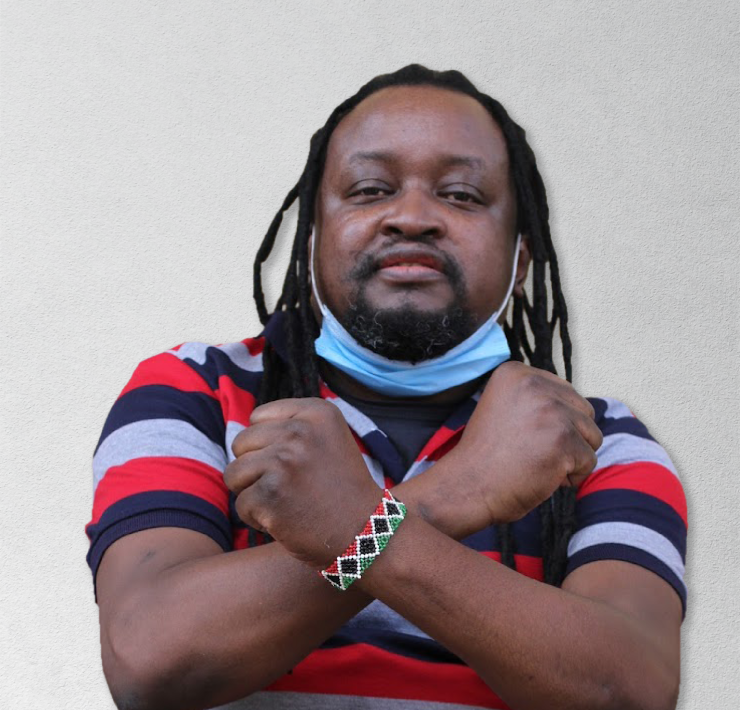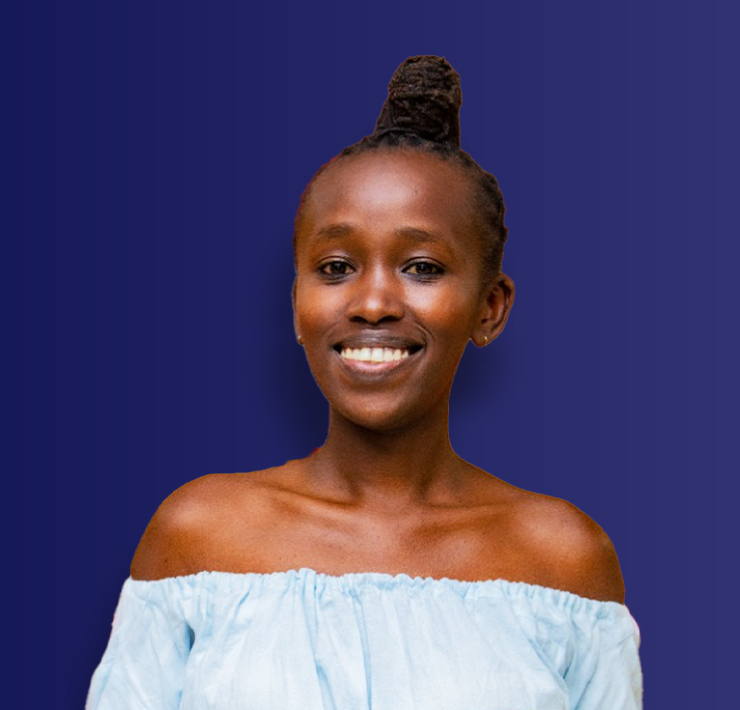Nabalayo is the fairy godmother of the Nairobi Underground. She’s a multi-talented artist whose self-produced debut album, Changanya, is well on its way to being a classic. She creates immersive soundscapes, her music a feast for the senses, a salt bath, a continuing reverb moving through everyone who partakes. Karwitha Kirimi speaks with Nabalayo for Debunk. The talk process, community and originating culture.
Karwitha: When I listen to Changanya, I feel like it’s from somewhere else. The way you layer sounds, it’s like there are 50 people in one song. It’s a full immersion – the immersion of a healing circle. What was the process of making Changanya?
Nabalayo: It was intuitive, a lot of feeling, being in the moment. When I look back I realise I had a lot of structure, it just came out of me without me realising. My expression is supported by the fact that I studied music in an African context, that really pushed me to do this. Before that, musically, I was really interested in the African diaspora; jazz and blues… old music but not from my context. So going to Kenyatta University and learning about African music, the context it springs from, how the music works, the complexity of it, performing it, dancing, singing, playing instruments… learning how to listen.
It’s the knowhow of an academic background, and also, the emotions that came with learning some things. I hated sitting in class hearing about how in Central Africa, when people didn’t meet their quota for forced labour, their hands would be cut off, being forced to grow cash crops, not allowed to speak their own language, they had to shave their heads… It was all so painful to learn. I cried in class. I didn’t want to hear it. We know that nasty stuff happened… I wanted to live just in the now.
Luckily, our lecturers were pro-Black, pro-Africa, pro-Kenyan cultural heritage, the way they thought and taught us to think , really cemented how I wanted to work.
And so I felt compelled to do something.
Slowly, I figured it out through being present in those classes, having conversations with peers in class, peers in the creative industry. I figured I wanted to preserve our cultural heritage and at the same time I was a kid raised in the city who wasn’t taught her mother tongue. So I decided to use traditional music as my base and add other things that appeal to me like electronic music, different singing styles. My first vocal muse was Björk. My mum had her music on the home computer so I listened to her albums on repeat.
The music on Changanya was a process of being true to all the versions of myself; the version of myself born in Nairobi listening to Björk and Beyonce, and the self I would have been if colonisation hadn’t happened. It was an offering to the people who suffered and survived colonisation, those who fought colonisation, even though it still happened, and the people who decided to work around it, keeping our languages, songs, drums and instruments alive.
Karwitha: When you say making the album was intuitive, for me, part of the process when I’m making is daydreaming, loitering, walking around talking to people, going down different rabbit holes, it’s not always clear where one is going until after… Was it a bit like that for you?
Nabalayo: It was definitely like that. I’d started making some of the songs before, and when I realised I wanted the album to be an act of cultural preservation, the songs made even more sense. Others were made after that realisation. You see the point of what you’re doing after you’ve done it. When you’re doing it, you’re going on the feeling, you’re chasing something you can’t see, you’re not even really sure it’s doing exactly what you want it to. But once you’re done with the project you realise, yes, I did do what I wanted to do.
Karwitha: How do dreams inform your work? Do dreams inform your work?
Nabalayo: My dreams when I sleep are very weird, they feel more like films.
In terms of what I put into my work, I put my ideal world; what if we were not colonised? What if we could speak to our ancestors? What if we appreciated everyone’s diversity rather than fearing the unknown? I put all these daydreams into my creative practice.
Karwitha: When you name Changanya an offering to those who suffered in our lineages, that is very palpable in the album. I certainly felt that different versions of me were held… and it also feels like it was made just for me.
Nabalayo: Yeah, not only was it an offering to those who came before us, it was also an offering to the people who are here now. It is “I see you, I appreciate you, and you need to be proud of yourself as you are.” We are taught many different things against ourselves, this album is a call to self love. There’s a legacy of pushing some of the things that make us up to the corner, thinking it’s primitive, but that’s what makes us us. Not all of us are lucky to be in our cultural context, but you should be able to connect to your cultural context, not feel like an outsider.
Karwitha: I’m glad to hear that your teachers were pro-Africa and pro-Black, because learning can be both a magical and painful experience. You talked about learning the keys to our cultural contexts through African music education at Kenyatta University (KU). But then there’s this idea that if you want to be successful in the arts at home then you need to go abroad to “start”. Did you feel that way at any point?
Nabalayo: Yeah, it’s funny because in first year I was trying to get into Berkeley. I did the auditions, I was a shoo in, but Berkeley decided they’re not sponsoring so I’d need to pay my own fees, which I couldn’t afford. So I chose to do what I can with what I have.
I didn’t feel bad that I had to be at KU, though. I just thought I would be happier if I went abroad because I was into blues, jazz… but thank God I didn’t go! Once we got into the course work, we saw the link between traditional african music and jazz and blues, and I realised I’m at the source itself, I’m where I need to be. So even if I pursue other things my focus will be on us as Africans in Africa, then the other things are an addition, they add spice. I also met my partner while at KU.
Karwitha: Yes! At the source, at the centre! I’m so glad that you stayed, that you’re here with the intention of living and making work for the people who are here, and that being your primary audience.
Nabalayo: With time… growing… seeing more things… The only thing that’s wrong with Kenya is the systems and policies around creative industries. Otherwise the talent, diversity and skill is here. We’re taught to think it’s elsewhere, yet it’s all here. We need funding systems, residencies, grants, art centres.
Karwitha: Yes! What inspired the names of your albums?
Nabalayo: Changanya came from a friend in uni. IPO came as a response to a question on where the future of East African music lies. My answer was that the future is here with us, it’s always been here, folk music is so futuristic. My answer is “it’s already here,” so ipo.
Karwitha: The first time I heard you share that was at the IPO listening party and it stayed with me for a while. I thought of the sankofa bird, to walk with the future, return and pick up your past. As you remind us, the future is already here.
Nabalayo: Yeah. Right now there’s a resurgence in African music, all types of expressions of it that’s moving people everywhere. There’s something more to our indigenous music than just music. When you dig into music practises from our past, you see there’s a reason why the music moves people. There’s an intention behind it.
Karwitha: Which music practises do you find resonate with you?
Nabalayo: I can’t pinpoint a practice that’s impressed me more than the other. They’re all beautiful in their own ways and so diverse. There’s so much I don’t know, so much I don’t understand. There’s a sense of just scratching the surface because you’re not there with the people and secondly, so much has been lost. Add to that the fact that there’s so much diversity, we have about 50 language groups in Kenya, Tanzania has about 100.
What I do in my practice is to say “This is what I love about it but I’m not going to pretend to understand it so here’s my prompt for you to go discover.” This is my interpretation, my expression, like if I was told to make a new culture, this is what I’d do. Whenever I see any music practice, my mind flips into learning mode: I want to listen, to be totally immersed, to let it wash over me.
Karwitha: Looking at African art existing in different forms, are there things you see or hear and feel that’s the spirit of Changanya right there?
Nabalayo: Yes, definitely. Anyone who is making with the intention to uplift and preserve cultural heritage, that’s the spirit of Changanya in any art form, be it writing, music or dance. I use this name because these days labels are important: there’s a system of documentation so I’m working within that system. Otherwise I’d have just made my music and not said a thing.
In fact, so many artists already do what I’m starting to call changanya. Because the spirit of changanya is speaking up, speaking out, this is who we are, this is our offering to the world.
Further afield, there are a lot of Asian bands from Japan and Korea who use traditional instruments in ways I enjoy. I look up to music practises from India as well, their writing systems and music education, is vast and diverse. I know there’s a music writing system in Ethiopia that survived – like annotations, the way you have music notes. It pains my heart to imagine how much was wiped out.
Karwitha: In a workshop I was part of, we talked about how indigenous cultures would code wisdom and knowledge in dance, music, beads… practices of oracular excellence, not just in the speaking but how we speak… how even with ululations, each ululation would have its own message. My takeaway was that because these were things that were practised in an embodied way, they can never really be fully lost to us. Each community or person can find or re-remember or re-imagine entry ways to that, to enter what is part of our bodies, our subconscious, our memory, our blood. Your music calls for dance, moves the body, a snapping of fingers or waist, a stretching of the neck this way or that way. It feels so suited to performance. Do you enjoy performing?
Nabalayo: My favourite thing is to be on stage. Performance is my favourite part, connecting with people, seeing how the message and intention reaches people, feeling the response, hearing how people feel and where the music takes them.
I love that exchange with the audience.
The music moves you because it’s informed by folk music, and folk music will always move you. That’s the intention behind it, from the people who created it. Even before I knew about cultural heritage, folk music would captivate me, it would just move me. I’d hear it and start to dance. It’s meant to remind you that you belong, it’s for everyone, not just a select few. Everyone participates.
Karwitha: The IPO listening party was transcendent and full of loveliness. Could you tell me a bit about putting your new album together and setting up the listening party?
Nabalayo: It was so nice, I was surprised that all those people were interested and bought tickets. Someone randomly bought three tickets just to support. The energy around it was so beautiful. I held it at my place out of necessity. I do a lot of things out of necessity and then afterwards, it takes on profound qualities.
I self-produced Changanya because I couldn’t afford to hire traditional drummers, guitarists, etc, so I used what I had – laptop and headphones – to make the music. I held the gig at my place because I couldn’t afford to book a traditional venue space. I decided to try holding it here and see what happens and it worked! Now I don’t even want to book a venue anymore, up here on the rooftop at my spot is the best space.
The creation stage of a new project can be stressful; as a creative, nothing is ever truly finished. At first, I’m inspired by feeling and move toward that. After laying down the first idea, I start thinking a bit more technically. So much thinking goes into it, my releases can take time. I can make a full song every day but getting the song to give what I want it to takes time.
Karwitha: I’m always curious to explore if and how the limits we encounter when making can encourage creativity, improvisation, or how we can grow around or within a limit in a really beautiful way.
Nabalayo: I look to indigenous practices and how we made use of what we had in our everyday context; if there’s a certain tree that grows in your area, that’s the tree you make instruments with, and that just becomes the tradition of it.
Or in dance, for example, Rwandan people revere their cattle, and their dances kind of mimic the gracefulness of the horns of a cow, or the Luhya with chicken and the lipala dance, with the leg scratching the floor like chicken scratching for food, or the Maasai who lived around lots of gazelle and antelopes who jump a lot and their dances are a similar jumping, a similar leap.
So what is there with you is what you use. When Africans were enslaved in the Americas, they weren’t allowed drums or instruments so they used their hands and clapped, used their voices. As one cultural path was lost to them, they created new creative cultural expressions.
With jazz and blues, when they started the music-tech wasn’t as advanced as what we have now yet you’d pay a fortune for one of those original records. People used what they had and made timeless music. The trick is in the doing, just doing. Don’t overthink it. If all you have is your phone, just do. Just do, with what you have.
Karwitha: How do you make sense of being a griot, to you?
Nabalayo: There’s an actual tradition of it, from West Africa. I honour that tradition and culture and respect it. I feel I want to be a part of that. I’m not sure the names for that person in our East African cultures, though I’m sure we had something similar – a custodian of culture, using their voice as an instrument.
Karwitha: It’s interesting how storytellers, healers and custodians of culture work in similar veins. It’s not hierarchical. It’s all of us creating the medicine and the culture together. Are there African folktales you find yourself returning to a lot?
Nabalayo: I love the idea that we can create our own culture.The idea that I don’t need permission, our ancestors did not need or ask for permission. They created things, and repeated it and boom, that’s tradition, that’s cultural heritage.
My grandpa wrote a book of Bukusu folktales. He did extensive research, interviewed elders who were singing songs talking about migration patterns, how they came from West Africa, went into Egypt then came down, found themselves in Uganda, and there was a split between two brothers, and the separation by colonial borders. He wrote his book and then a mzungu stole the rights to the book and it’s been a legal battle. The book might be available on Amazon but the author listed isn’t my grandpa.
Karwitha: SCAMMERS!
Nabalayo: Yeah, but there’s one he published in Kenya called Bukusu Folktales, I dont think it’s in print anymore. That’s one of the folktales I had access to. He wrote a lot about the culture. There’s another in the works that the family are compiling to publish.
I had access to Bukusu folktales, some West African ones, Anansi and the gods. I love West African stories because their gods are still alive. There is so much diversity in African culture. I’d love to plug folk religion from my community, but it’s now so Catholic/Adventist and the culture has morphed into a distorted version of itself that upholds patriarchal values… What the colonizers did to us, we’re doing to each other.
Karwitha: How do you take care of your spirit, of yourself, as you make?
Nabalayo: I withdraw. I keep myself in spaces that feel safe for me, and I only leave them when I want to explore a bit or for work. I’ve created a system where I go from safe space to safe space.
When working on a project, I consume more mindfully. I listen to artists I want to emulate, cultures I want to learn from, sounds I want to capture. When you listen to my work you can hear this community’s ululations, that community’s drums. My space is very curated.
I don’t have WhatsApp. I delete Instagram from time to time. If I wasn’t an artist that needed to connect with people for my music, I wouldn’t be on social media at all. I probably wouldn’t have a smartphone.
I consistently live in curated spaces. It’s very good for me.
I take a lot of notes in the process. I write about the feelings I want to portray. I have different types of books in which I take different notes. There’s a listening list, there’s one on the artists I am learning from, there’s another on styles I want to try. Then there’s the music I listen to for specific projects. And I write about how it makes me feel. Does it feel like I’m floating in water, or drifting in space? I list random thoughts, phrases – some phrases turn into titles, song titles, or even a chorus. I write everything down with pen and paper. Recently, I’ve been trying out notes on my phone but I feel more comfortable with pen and paper
Karwitha: How did making and releasing the album shift things, be it inside or outside you?
Nabalayo: What shifts me is the outcome of it, giving your art to people and seeing their perception of it and learning from that. It’s like seeing yourself from someone else’s eyes. It helps me understand myself more. No one else can tell you who you are but you can learn from what they’re saying.
After putting things out, I learn more about my style and expression. I’ll make something and feel “This is the best thing. Will I ever be able to make something as good as this again?” But then when I go back to the drawing board to make something new, I re-discover “Wow, this is actually good. It’s within me.”
That’s where the learning and transformation take place for me.
Karwitha: You apprenticed with KMRU, Hendrick Sam and Amenya. How did that come about?
Nabalayo: We met in KU and became friends. They were doing production. I was the singer. I wanted to record music. I asked them to record me but then everyone got so busy and couldn’t record. So I asked them to show me how to do the thing and they all agreed. I got the software. They sent me tutorials. I’d call them up when I had questions and they’d respond at any time. I learned how to produce with ableton. Even now, when I have a problem, I still reach out. They were instrumental in my journey as a producer.
Karwitha: I appreciate how you name who you learn from and with. How do you experience community in terms of making? What have your experiences of community been like?
Nabalayo: I learned music production in community. Not just skills. They’d recommend artists to listen to to diversify my sound palette. I commend femme spaces and the queer spaces too. When I was starting out there was so much support. I had a very soft landing as a producer, performer, as someone who wants to pursue multiple things. I got into a production course at Santuri a while back through a lot of femme support.
When I left home, I had a lot of community support; couch hopping, people would host me for a month at a time, support beyond creativity, support for you as a person.
Community comes through for having sounding boards, asking people to let me know how the music makes them feel. That’s helpful in gauging who I am in my music, especially hearing from people who care.
I sent IPO to different people while it was in process. The feedback was that it’s good music but they don’t understand what’s going on. That gave me perspective. I needed to inject more of my voice into it. I went into community again and asked, “when you hear music, what makes you know it’s me?” With more feedback, I understood myself more.
My equipment spoiled a while back. I went to Instagram, and five or six different people offered to fix it. Someone else offered me his equipment to use.
With IPO, I wanted to stop thinking and call people over, have a listen, then figure out how to get it on streaming platforms later. I asked people if they’d come to my place and listen to the album. It was amazing, for people to come, to show up, it was so genuine. It wasn’t really an event where you were going to see and be seen. It was just “I’m really interested in what you’re doing.” People had amazing inputs and thoughts from different practices that I can learn from.
Also people making spaces for other artists, like KMRU plugs me to a bunch of opportunities. A lot of recognition and opportunities because someone in your community is making sure they’re holding the doors open.
Community is very important to me. In folk tradition, community is a big thing. There’s the sonic characteristics of the music and there are characteristics around the musical context, one of the latter is community. The music makes sense when it’s happening within community. Community is a characteristic of changanya. Now when I’m curating my safe spaces I find out which communities I can plug into or which communities I can create.
Karwitha: How did you fund your debut album?
Nabalayo: I didn’t really need a lot of money. I needed equipment, which I got in 2018, again through community. I wanted to hold an event to raise funds to get recording equipment I could use at home. I held a concert and artists volunteered to perform for free. We made music at the Michael Joseph Centre. The space itself was free. I just needed to pitch the event to them. It rained so much that day but people still came. I made around KSh 60,000. I got a soundcard, mic, headphones, then someone donated a microphone stand. From there, I recorded things at home for free. I made the visual art for the album myself. When it was time to releasing it, I had KSh 3,000 to put it up on streaming platforms, so distribution was settled.
For my upcoming projects, I want to design bigger releases. My releases so far have been me putting music out there, posting on social media, just because that’s what was affordable. Now that I know people enjoy my music, I’m thinking of crowdfunding or pitching to different organisations and spaces, so that even if they’re not contributing money, they can offer equipment/sound/space.
I’m thinking of making interactive merch, maybe an installation, like an art show, and each song is represented by a different illustration and you can walk through the gallery as I perform live and you can buy the art after. Or making lesos, colouring books, different things that keeps the spirit of community alive around the body of work since we have to make money under capitalism.
But still, when there’s no funding, what you have can work for you.
Karwitha: Which artistic lineages/constellations inform your work? Put another way, who do you see your work to be in conversation with?
Nabalayo: So many! So many people in the Kenyan industry. As long as the message and intention of their practice aligns with me. Around the time I released Changanya, there was a sort of renaissance of music in Nairobi. A bunch of artists were becoming more intentional about their practice, and when I’d reach out and ask why they’re doing what they’re doing, I’d find it’s the same thing pulling them.
When you talk to a lot of artists in the underground/alternative scene you find most of us are on the same path. We might sound so different, but our goal is the same. Visiting Nairobi Contemporary Art Institute and hearing the story of the gallery, the projects they’re taking on, the artists they’re giving space to and the shows they’re putting on – different people in the visual arts world at different levels, people on social media, different artists, collectives, musicians, people organising events. There are so so many!
Karwitha: A question from someone in my community. Mumbua asked me to ask about Mwana wa Gorofa off the Changanya album.
Nabalayo: Mwana wa Gorofa was about my partner, Brian. It’s funny because that’s his favourite song from that album. When we first met we clicked instantly. It didn’t feel like butterflies. It felt like home, deep grounded care. I knew he felt something, but I wasn’t sure exactly what he was feeling. We’d spend time together, enjoy each other’s company, and then it reached a point where I realised I actually love him… I think he was overwhelmed, and so instead of having a conversation, he started acting funny, and I was like we’re not doing this. So I wrote the song before having the conversation with him. The song was basically about that situation. Now he sings it word for word, even the ululations.
Karwitha: The ululations are so good!
Listen to Nabalayo’s latest album IPO, Here.


